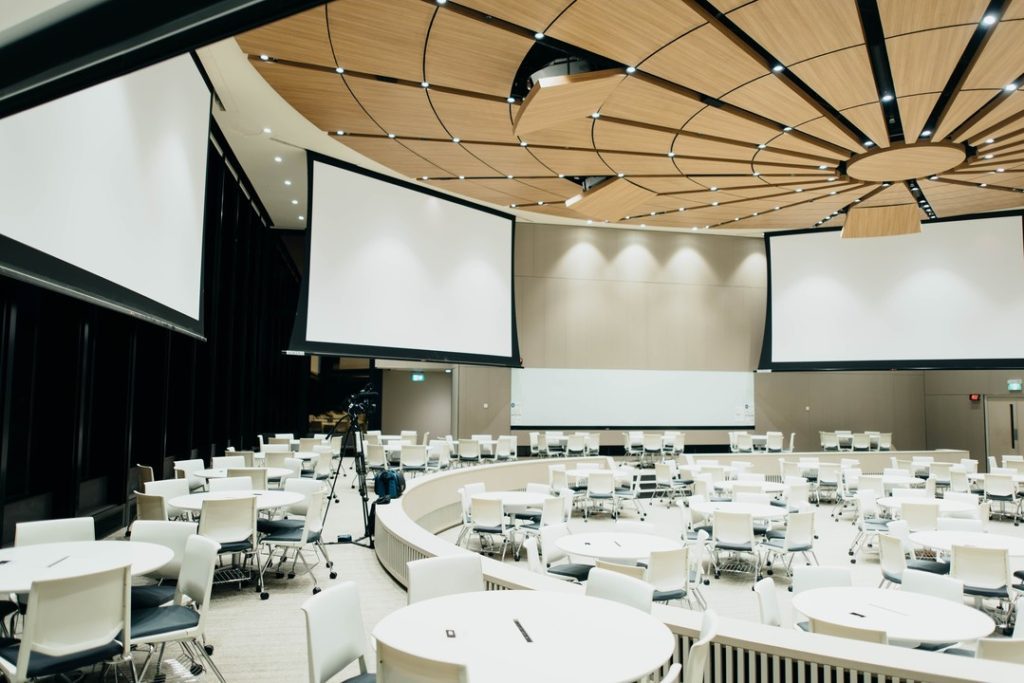There are many elements that go into producing a seamless A/V experience. For an event or keynote speech there must be the right equipment used to fit the acoustics of a space, the right level of audio mixing and the correct layout of furniture to help sound travel throughout the room. For a meeting or conference call, the ideal combination of software and hardware must be developed to offer easy usability.
What may seem necessary is often not done correctly. Audio is something that, if done right, appears normal, but if done wrong can be devastating for a company. Nothing is worse than technical errors on a conference line or hearing mic interference and static at an event. You should leave your meeting or event thinking about the discussion and content, not stuck worrying about the audio issues you had. This is the value of onsite support for A/V, being able to know that your audio will sound crystal clear, no matter the circumstance. Check out below, how onsite support can help lead to an optimal audio experience.
Seamless Audio Starts with Design
While a good audio experience appears seamless, there is a lot that goes into the back end. Bringing in an expert can help to bridge the gap between the technical aspects clients may not know, and the end result that users expect. This can be asking the questions that end users didn’t know they needed to and translating language into an experience. Bypassing the experts can lead to much costlier and less effective installations.
A trusted A/V provider will be able to tell how a space needs to be laid out for the best audio quality. From the positioning of furniture to the right hardware that needs to be installed, integrators ensure that spaces are designed for the best possible end user experience. Including ease of use and quality of audio.
This means being to take your unique needs and creating viable installations for specific situations. Experienced integrators can scale a solution yet keep individual nuances in mind for certain spaces. An auditorium may need more equipment where a conference room will likely require less hardware. The experts will know where integrated spaces are needed, and the particular equipment required for certain use cases and installations.
The Impact of Real Time Support
Even though integrators account for many different variables in the design phase, accidents happen, and sometimes small changes can drastically change the effectiveness of an installation. As well, certain use cases like a keynote speech require more real time support than a conference call for example. Nothing is worse than a poorly executed speech or panel event, so often having an expert onsite to mix audio in real time can help to ensure a seamless audio experience. An event is a reflection of a company, so there is no reason to leave anything up to chance.
Integrators can also help to troubleshoot technical issues and identify the source of different audio problems. Whether it is user error or a network problem, onsite experts can get help to users in minutes to get their conference call back up and running. Instead of panicking because a crucial meeting is having technical issues, you could be back to 100% in moments. Even if the audio issues are coming from the other end of the line, integrators can help to gauge quality and recommend how to adjust accordingly.
Audio quality really isn’t thought of until it goes awry, but clearly there is more going on behind the scenes than people think. Ideally, integrators are able to identify your A/V needs up front to provide scalable framework for your company goals. Combining technical expertise with real time adaptability is a great way to keep audio quality optimal, and end user stress minimal. Because at the end of the day, you just want the call to work.



